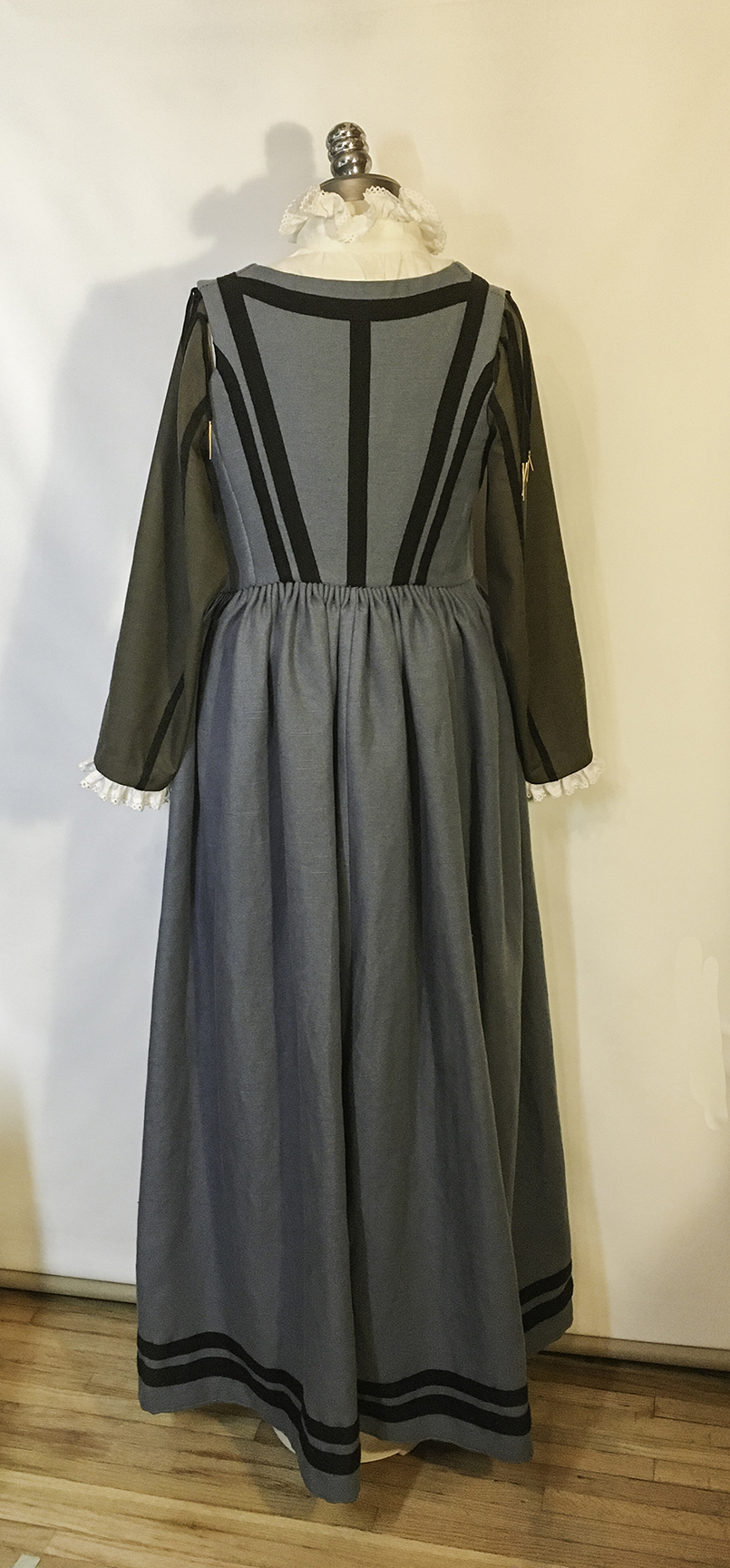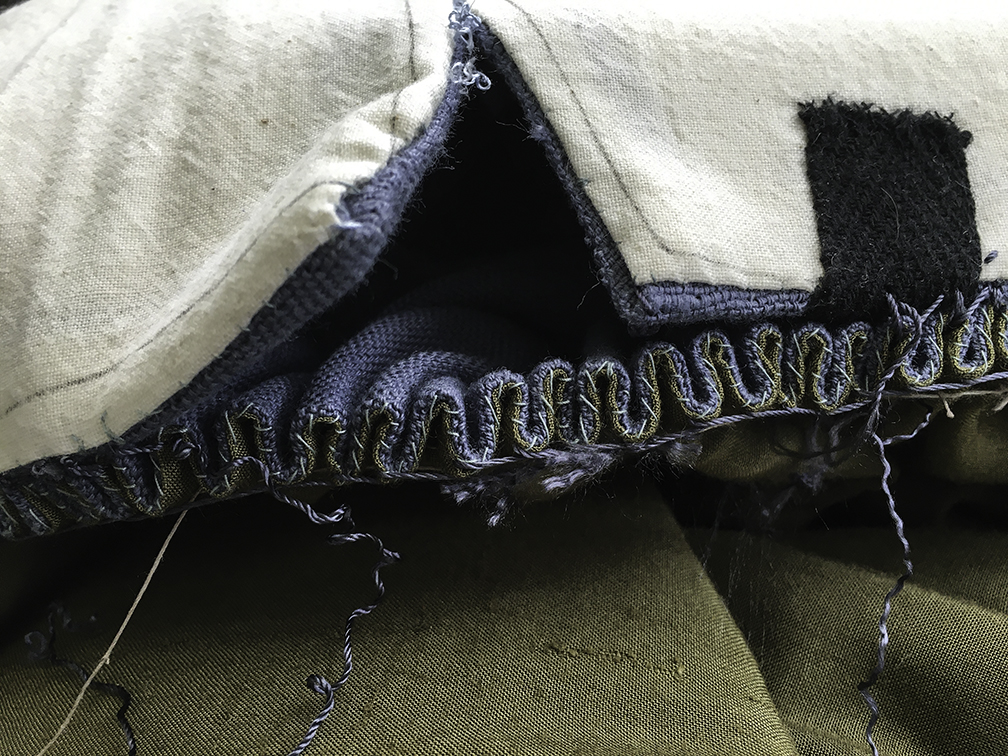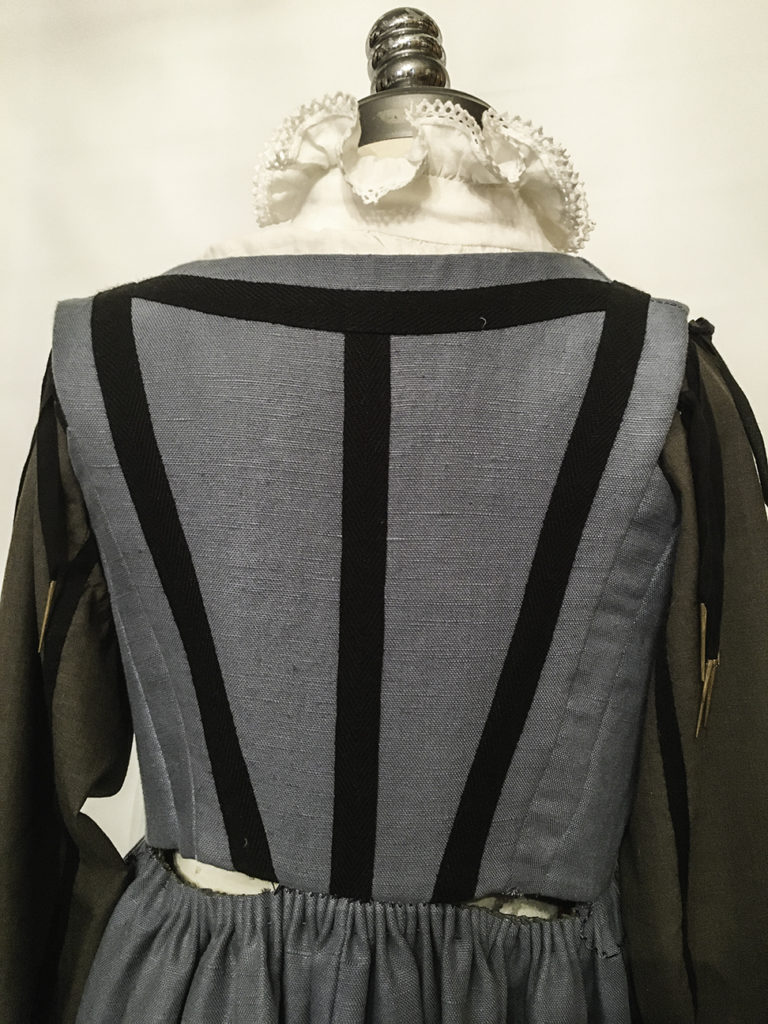SO much easier…
My pretty blue fustian sottana was sideswiped by Covid. I’ve gained weight, and, if I didn’t alter it, I’d either have had to lace it up excruciatingly tight, or wear a stomacher.
While I could actually get the front edges to meet – for a few seconds – it was way ridiculously too uncomfortably tight. And stomachers don’t appear to have been a thing in late 16th century Italy. Or, at least, I haven’t found a reference to one, or an image.
So alteration it was. Which is where the beauty of 16th century garment assembly came to the fore.
When I originally made the sottana, I used 16th century techniques, finishing each component – the two fronts, the back, and the skirt – completely before final assembly. I’d catch stitched the seam allowances of the fashion fabric to the canvas interfacings, and slip stitched the bodies linings in. The skirt is flatlined, and I and stitched the raw edges of the skirt lining under to hide the raggedy shuttleless loom selvedges. Then I whip stitched the seams of the bodies, applied the trim, stitched the skirt to the bodies, and, finally, sewed the trim to the bottom of the skirt.
Lots of hand sewing, and a clean finish all around, which made adding the extra SO much easier. (And easily reversible, if I ever lose the weight! )
Rather than having a bunch of raw edges to contend with when I unpicked the seam where I wanted to add the extra fabric, there was a nice, clean, finish, all ready to pop the extensions in.
It needed about 2.5 centimetres/1 inch width added on each side. I had plenty of fabric left to make the alterations – almost a meter of the fustian, and lots of the washed canvas & muslin that I’d used for the interlining and lining.
Since the added piece was such a simple shape, I didn’t bother with making a pattern – I measured it out on the canvas, cut it out, and cut the fustian around the canvas, adding seam allowances. Then I followed the same process as with the original construction – catch stitching the seam allowances to the canvas interfacing, slip stitching the lining in, and whip stitching the finished extensions into place.





Once that was done, I tried the sottana on just to be sure the alteration fit. It does; and I put it up on my judy to photograph it. Kinda disappointing. It looked OK; just … OK.
So I had a dig through my stash to see if I had some of the original tape that I’d used as trim left to cover the extra seam in the bodies. I did, but not enough, so I went to Mokuba to see if they still carry it. They do – and they have a narrower version, which is in even better proportion. I splurged a kingly $2.49 for a meter.
Because the sottana is made to be washable, and I’d pre-shrunk all the elements, I soaked the tape in hot water, then dried it in the sun. Once it was dry, I ironed it and sewed it on over the extra seams.
Luckily, to sew the skirt back on, I didn’t have to re-gather it – cartridge pleats are flexible, and I’d stabilized them with lots of stitching on the inside. All I had to do was pick back the stitches joining the skirt to the bodies a few centimetres either side of where I added the width, and the cartridge pleats graciously agreed to expand enough to accommodate the extra girth.
All in all, the “finish each part, then assemble the whole” method of construction makes alterations SO much easier. I didn’t have to contend with clipped seam allowances, raw edges, re-gathering the skirt, or the general messiness of tidying the whole thing up. All I had to do was unpick two seams and a bit of a third, make the extensions, sew them in, and re-attach the skirt.
I suspect it also would make repurposing parts of worn-out clothing a lot easier. I haven’t seen any examples, but I wonder if there were some Frankenstein garments out there, with the front from one, the back from another, the sleeves from a third, and so on.
Fabric was precious; people wanted to get as much mileage out of it as possible, so it wouldn’t surprise me! Not at all!



